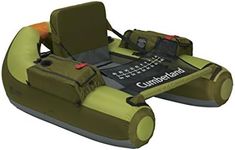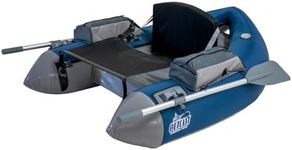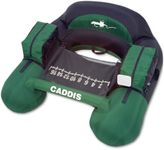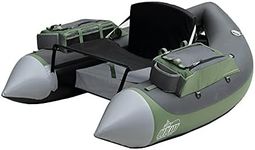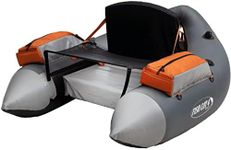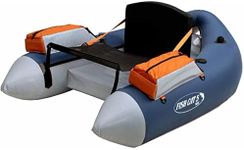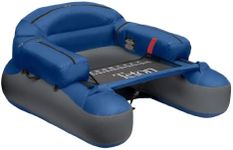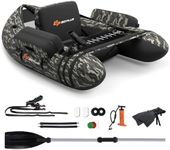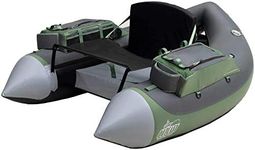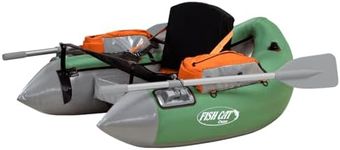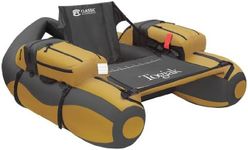Buying Guide for the Best Fishing Float Tubes
Choosing the right fishing float tube can significantly enhance your fishing experience. Float tubes are inflatable fishing platforms that allow you to fish in areas that are difficult to reach from the shore. When selecting a float tube, it's important to consider various specifications to ensure it meets your needs and preferences. Here are some key specs to consider and how to navigate them.MaterialThe material of a fishing float tube is crucial for durability and performance. Common materials include PVC, nylon, and polyester. PVC is highly durable and resistant to punctures, making it ideal for rough conditions. Nylon is lightweight and offers good durability, while polyester is also durable and often more affordable. Consider where you'll be fishing and choose a material that can withstand those conditions.
Weight CapacityWeight capacity refers to the maximum weight the float tube can safely support, including the angler and their gear. This is important to ensure safety and stability on the water. Float tubes typically range from 200 to 350 pounds. If you plan to carry a lot of gear or are a larger individual, opt for a higher weight capacity to ensure comfort and safety.
Size and DimensionsThe size and dimensions of a float tube affect its portability and maneuverability. Larger tubes offer more stability and space for gear but can be harder to transport. Smaller tubes are easier to carry and navigate but may have less storage space. Consider how you'll transport the tube and the type of water you'll be fishing in to determine the best size for you.
Seat TypeThe seat type in a float tube can impact your comfort during long fishing sessions. Common seat types include inflatable, foam, and adjustable seats. Inflatable seats are lightweight and easy to store, foam seats offer more comfort and support, and adjustable seats allow you to customize your seating position. Think about how long you'll be sitting and choose a seat type that offers the best comfort for your needs.
Storage OptionsStorage options in a float tube are important for keeping your gear organized and accessible. Look for features like pockets, D-rings, and cargo nets. More storage options can make your fishing experience more convenient, but they can also add to the weight and bulk of the tube. Consider the amount of gear you typically bring and choose a float tube with adequate storage solutions.
Bladder SystemThe bladder system in a float tube refers to the internal air chambers that provide buoyancy. Single bladder systems are simpler and easier to inflate, while multiple bladder systems offer added safety in case one bladder fails. If you prioritize safety and redundancy, a multiple bladder system is a better choice. For simplicity and ease of use, a single bladder system may suffice.
PortabilityPortability is a key factor if you need to carry your float tube to remote fishing spots. Consider the weight, packed size, and whether the tube comes with a carrying bag or straps. Lightweight and compact tubes are easier to transport but may compromise on features and durability. Assess how far you'll need to carry the tube and choose one that balances portability with your other needs.
